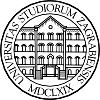|
|
Detalji o izabranom predavanju:
| Seminar: | Seminar za numeričku matematiku i znan. računanje |
| Naziv predavanja: | Data-driven reduced-order modeling of dynamical systems using frequency/time-domain measurements |
| Predavač: | Ion Victor Gosea, MPI Magdeburg, Germany |
| Vrijeme: |
12.05.2022 12:00 |
| Predavaonica: | 105 |
| Tip: |
Gost seminara |
| Opis: | This talk is part of the RandLRAP project workshop and is jointly hosted within the seminar.
In many applied sciences and engineering applications, the underlying dynamics of the process under study may be inaccessible to direct modeling, or it may be only partially known. However, with the increasing prevalence of available data from practical experiments, it is of high relevance to include such measurements in the modeling process. Additionally, the measured data incorporates the model inherently, and by making use of numerical linear algebra tools, one can extract the necessary information in compressed coordinates. Possible challenges may arise, such as with corrupted or perturbed data (in the presence of noise or uncertainty), or when data are of large dimensions.
Data corresponding to the underlying dynamical system are available in various formats. For example, in the form of frequency response (transfer function evaluations) or of input-output values measured in the time domain. In such cases, one could construct a simplified empirical model of lower dimension that fits the measured data, and hence accurately approximates the original system. This reduced-order system may then be used as a surrogate to predict behavior or derive control strategies.
The balanced truncation (BT) and Loewner-matrix (LM) methodologies are common model reduction approaches. However, only the latter approach (introduced in Mayo/Antoulas '07) is purely data-driven, while the first isn't. We show how to implement a data-driven counterpart of the BT approach by using only compressed data, without explicitly using the model. This method (G./Gugercin/Beattie '22) is based on imposing quadrature approximations implicitly, and on showing that scaled Loewner matrices have an important system theoretical significance.
The main motivation of the proposed methods is as follows: measured system response data can be used without the need of accessing any prescribed realization of the original model. In our methods, data are sampled values of the transfer function corresponding to the original model (in the frequency domain), or of evaluations of the impulse response (in the time domain). It is to be noted that we do not require at any time explicit access to the sampled state variable of the system. We discuss parallels between the continuous and the discrete-time domains, by means of incorporating the discretization scheme in the process. We illustrate the approaches numerically for various models and data sets. |
|
|



